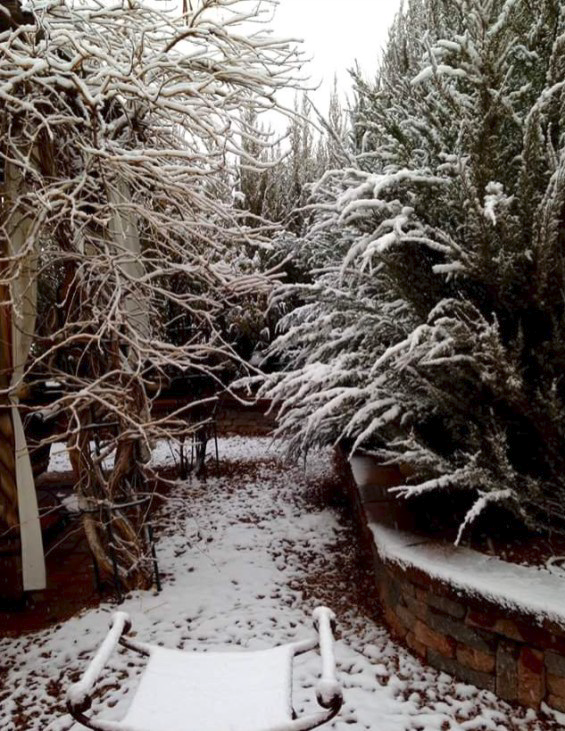The Garden Sleeps

There comes a time each year when even the most engaged gardener appreciates the declining day length and cooler temperatures which signal that the end of arduous toil, however be-loved, is winding down for the year. The amount of time spent watering pots or plots, denuding an area of unwanted plant growth, commonly known as weeds, and deadheading flowers to encourage yet one more flush of lively color or harvesting those tasty morsels of homegrown vegetables is finally coming to a close for the season. The gardener finally gets to rest while the garden sleeps.
With the shortening of daylight hours, the deciduous tree leaves turn colors other than green as now these omnipresent pigments which have been masked by the vibrant green produced by the plant machinery for photosynthesis are no longer hidden and present their own beauty to the garden. Some of the most temperature sensitive plants such as annual flowers and vegetables cease to exist in a climate zone which would only support them for a single season. Their brown and lifeless leaves and stems may become natural mulch if left alone and close enough to tender perennials that may or may not re-turn depending on the severity of the winter cold. Perennials too, lose that blush of life and lay dormant in the ground with most if not all of their above ground structure looking tired at best with a few species giving interest to the space by the stalks sup-porting their seed heads or the twisted leafless woody vines providing new elevated designs to observe. Decorative pots once overflowing with lush vegetation have probably been cleaned up for the fast approaching winter weather and become a simpler focal point while the garden rests.
Only the ever-green plants and trees continue to greet the garden visitor with nature’s color palette beyond the shades of brown.
Hopefully, the winter season brings the always welcome moisture supplying storms to the garden for, although resting, water addition to the ground is as necessary as it was in the heat of the summer albeit less is necessary to keep the trees and perennials healthy until the days lengthen again toward springtime and the garden growth starts to re-emerge. A blanket of snow, as infrequent as it is in our desert area, acts an insulator for the young perennial shoots that may otherwise emerge in a warm spell mid-winter only to be stunned and stunted by a return to below freezing temperatures.
Winter is also the time when a well rested gardener starts to dream of “playing in the dirt” and reconnecting with nature. Catalogs of garden perennials, flower and vegetable seeds, tools, raised beds,ceramic and clay pots, and other garden ornamentation flood the mailbox and inspire the gardener to take measure of last year’s plantings, harvest, and beauty to see just where changes can or should be made for the upcoming season of dream implementation. The gardener’s excitement soars as the laziness of the garden itself lingers for yet another couple of months while the garden sleeps.
Yes, the garden sleeps, storing energy in the roots of trees and perennials so it may emerge from that slumber and bring forth the miracle of new growth in the spring of the year. Since our winter is relatively mild, allowing the garden to sleep for a few short months not only renews plant vigor, but also restores the energy of this gardener for another interesting and fruitful season upon which to contemplate. Pleasant dreams, my beautiful garden space.
